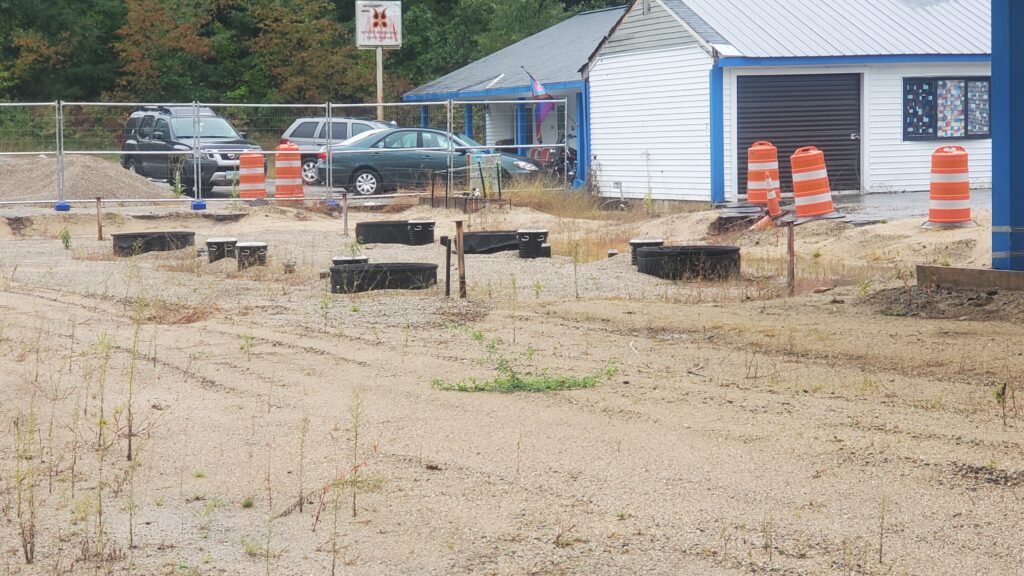Editorial
For two years, Effingham’s Planning Board limited the public’s ability to speak on the record and ask questions at its Meena LLC gas station hearings. It was a missed opportunity, as became apparent when the microphone was finally turned over to the audience at the board’s June 13 meeting.
What the board heard was an array of facts, practical concerns and questions from a hazardous waste mitigation environmental consultant, a chemist, neighboring town planners and conservation commission members, geologists and an emergency responder. Not to mention parents of school-age children and other regular folks who live near the site and in the area.
The public comments that night showed that the Meena plan remains incomplete and has not demonstrated it won’t be a threat to the health, safety and welfare of the public, the standard the Planning Board must use in its deliberations.
Since the application is a Development of Regional Impact affecting ten communities that rely on the Ossipee Aquifer for drinking water, Freedom Conservation Commission Chair Jeff Nichol was at the meeting to speak on behalf of Freedom’s Select Board.
Nichol, who is an engineer, said the oil-water separation system, which has been redesigned multiple times, still “raises significant concerns” that it can be overwhelmed by extreme weather events, of which there have been three 100-year storms in the past 18 months.
Nichol said a gas station is “ill-suited” to the Meena site, and asked the Planning Board not to approve it unless the prevention systems can handle 100-year weather events.
Geoscientist Dr. Robert Newton was at the meeting to speak despite Meena’s repeated attempts to prevent him from addressing the board. The Conway company’s attorney has publicly disparaged Newton for not being an engineer, and a Meena contract engineer called him “reckless” for saying Meena’s plan would be illegal if approved.

Cars in the parking spaces for Meena’s apartments show their proximity to the proposed diesel gas tanks, just to the viewer’s side of the fence. Critics of the plan say a Traffic Study is needed before the Planning Board can determine the impact of an increase in cars and trucks at the site. Contributed Photo
But there was Newton on June 13, speaking to the Planning Board after the board’s technical consultant, North Point Engineering, said there was merit to some of Newton’s claims that the plan is deficient. North Point signed off on the plan in April and said it met all requirements.
Addressing the board, Newton said that even with the latest revisions, there is a need for better “subcatchment delineation.” Like Nichol, he said the design of the oil-water separation system will likely fail in extreme weather events.
Pointing to the controversial location of the underground gas storage tanks in proximity to the Public Water Supply well, he provided the board with quotes from a DES email saying it is not the state’s job to consider the hydrologic conditions of the site. Instead, the state is relying on the Planning Board to determine whether the location is appropriate for a gas station.
Then there was the issue of traffic. Believing a Traffic Study was required, Meena asked the board two years ago to waive the study. The request languished until recently, when the board determined a study is discretionary, rather than required, and set it aside.
But the public brought it back to the table on June 13. One of the reasons a study is important is that the site is a school bus stop. Parents say the number of children using it has doubled in recent years, and census data show there have been population increases in the three surrounding towns since the previous gas station was removed in 2015.
Meena’s limited details about the entrances and exits to the convenience store and apartments make it unknowable whether traffic patterns for the gas pumps and an increase in the number of cars and trucks will pose a danger to store patrons, pedestrians and apartment residents. All of which make the application notable for not including a Traffic Study.
Consider also that groundwater flows north at the Meena site, according to a 2016 DES report. That means groundwater contaminated by petrochemicals from the gas station would flow directly to abutting homes in Blueberry Estates, and on toward homes on Broad Bay and Leavitt Bay, all of which are in Ossipee, and all of which have private wells.
This hydrological fact has not previously been acknowledged or publicly discussed. Neither has it been pointed out that well contamination could require Ossipee to provide municipal water services in that part of its community at a cost of millions of dollars. It is an issue worthy of serious discussion, but it had to be raised by members of the public.
These examples—and there were more of them—show the variety of issues that did not get the attention they needed during the two years that the board limited public comment. But they’re now on the table—and on the record—because the June 13 hearing provided the opportunity for the public to be heard.
The Planning Board did itself a disservice by keeping the public at bay for so long. Sometimes the public can see things a Planning Board can miss, and sometimes those things reveal significant gaps in information that a board needs before it can render a decision that is reasonable and lawful.
The high-stakes Meena application shows why public comment is important at all points in a planning process. Considering the perspectives of those affected should never have been an afterthought, as it was in this instance.
Note: The Planning Board will make a site visit on Monday, June 19, at 6:00 p.m. The site visit is considered a public meeting and the public may attend. The board will meet again on Tuesday, June 20, at 6:30 p.m. at the Elementary School, at which time it will continue its consideration of the Meena application. Public comment ended after the June 13 hearing, but the board chair said public comment may be opened again if circumstances warrant. Letters are still being accepted.

What is odd to me is what seems to be loose ends and still, sketchy design. Maybe I’m being too worried about a company proceeding in constructing the petrochemicals station with questionable approvals. JMO. But how do we trust future performance at this point ? IDK. Maybe it’s just me.
As far as I am concerned, this company has been unethical, illegal and disrespectful of our town’s ordinance from the beginning of this proposal.
This then also includes all our citizens who put forth this ordinance in 2012, which the Zoning Board disregarded by their decision. It is now for the Planning Board to correct the Zoning Board’s decision and DENY ANY FURTHER PROCESS.
This “gas station fiasco” should NEVER have been started in the first place! Meena started the project hoping that he could circumvent the question of the Aquifer. It’s all an under-handed decision by Meena to do “what he wants” and too bad if an accident occurs … while innocent lives are at risk. STOP THIS NOW BEFORE IT’S TOO LATE!!!
I agree with Patricia the town had an ordinance that stated a gas station shall never be allowed to operate at this location and it is time for the Zoning Board to admit they made a mistake and to work with the Planning Board to make sure a gas station is not allowed to operate at this location. This is a perfect example of where two wrongs don’t equal a right!!
“innocent lives are at risk. STOP THIS NOW BEFORE IT’S TOO LATE!!!” Certainly, no irrational hysteria here.
Know what I remember hearing when the station was in operation for years before the shutdown? Bupkis, absolutely nothing. Not one mention of the aquifer…ever.
Then along comes Boyles’ who apparently couldn’t run the business and out of nowhere they decide to remove the tanks and shut down the station. How, exactly, did shutting down the gas help the business? Something about this just doesn’t smell right.
Where is the concern for the aquifer as it relates to fertilizer run off from land, tree and brush removal on the surface, old failing or out of code leach fields, improper oil disposal, etc.